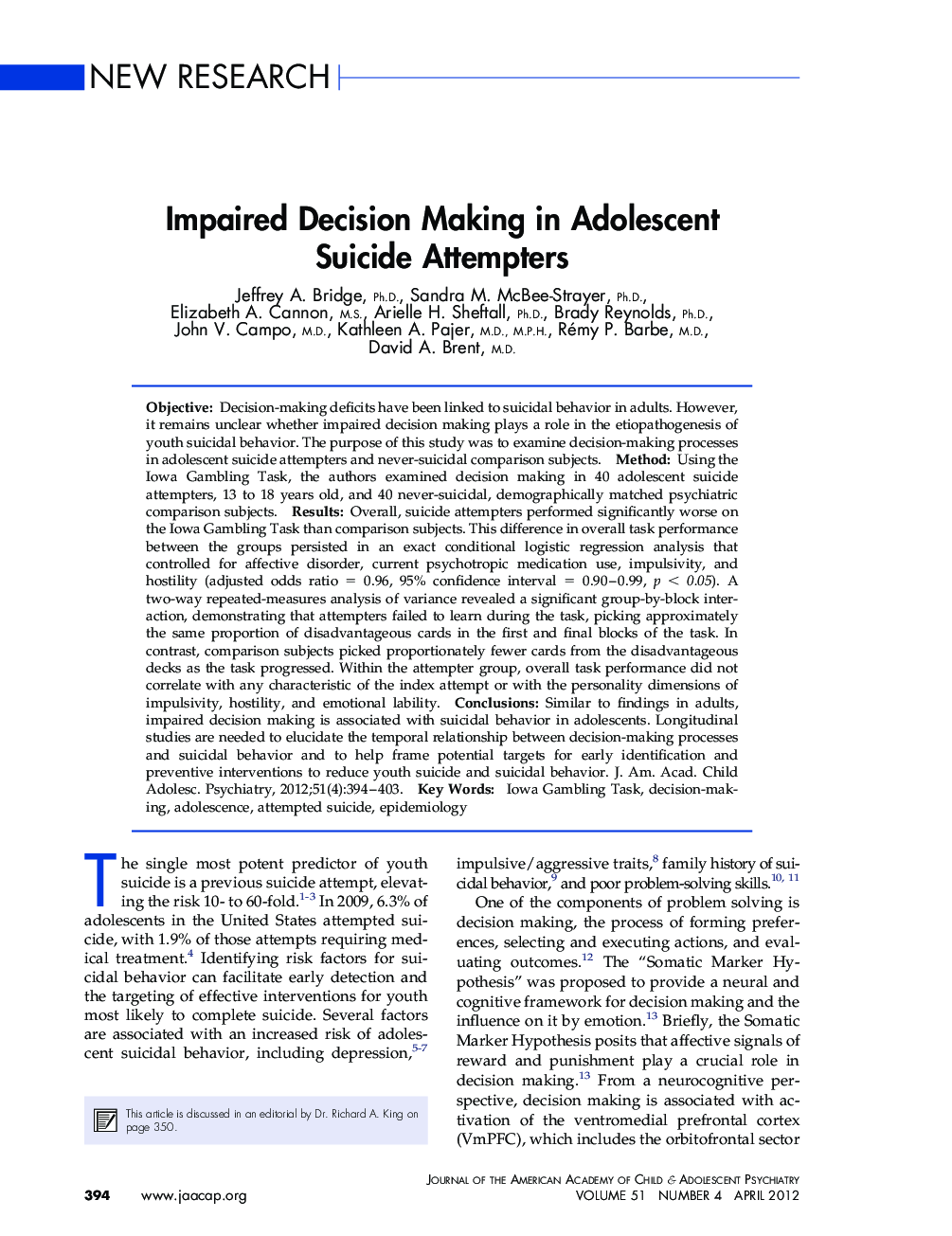| Article ID | Journal | Published Year | Pages | File Type |
|---|---|---|---|---|
| 325367 | Journal of the American Academy of Child & Adolescent Psychiatry | 2012 | 10 Pages |
ObjectiveDecision-making deficits have been linked to suicidal behavior in adults. However, it remains unclear whether impaired decision making plays a role in the etiopathogenesis of youth suicidal behavior. The purpose of this study was to examine decision-making processes in adolescent suicide attempters and never-suicidal comparison subjects.MethodUsing the Iowa Gambling Task, the authors examined decision making in 40 adolescent suicide attempters, 13 to 18 years old, and 40 never-suicidal, demographically matched psychiatric comparison subjects.ResultsOverall, suicide attempters performed significantly worse on the Iowa Gambling Task than comparison subjects. This difference in overall task performance between the groups persisted in an exact conditional logistic regression analysis that controlled for affective disorder, current psychotropic medication use, impulsivity, and hostility (adjusted odds ratio = 0.96, 95% confidence interval = 0.90–0.99, p < 0.05). A two-way repeated-measures analysis of variance revealed a significant group-by-block interaction, demonstrating that attempters failed to learn during the task, picking approximately the same proportion of disadvantageous cards in the first and final blocks of the task. In contrast, comparison subjects picked proportionately fewer cards from the disadvantageous decks as the task progressed. Within the attempter group, overall task performance did not correlate with any characteristic of the index attempt or with the personality dimensions of impulsivity, hostility, and emotional lability.ConclusionsSimilar to findings in adults, impaired decision making is associated with suicidal behavior in adolescents. Longitudinal studies are needed to elucidate the temporal relationship between decision-making processes and suicidal behavior and to help frame potential targets for early identification and preventive interventions to reduce youth suicide and suicidal behavior.
